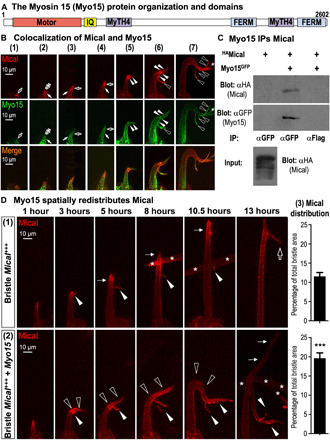Fig. 2. Myo15 associates with and distributes Mical to spatially and directionally remodel cells.

(A) Drosophila Myo15’s domain organization matches mammalian Myo15. (B) Mical (red) and Myo15 (green) colocalize in vivo (UAS:mCherryMical/+, UAS:Myo15GFP/+, B11-GAL4/+). (1) to (7) show different bristles at increasing developmental stages. Mical-Myo15 overlap/colocalize within early extending bristle tips (open arrows), tracks around these tips (closed arrows), narrow tracks emanating from Mical-enriched regions (closed arrowheads), and within Mical-triggered branches (open arrowheads). Asterisks indicate adjacent bristle. (C) Myo15 immunoprecipitates (IPs) Mical in vivo. α, antibody. (D) Myo15 spatially redistributes Mical (red) to remodel cells. Bristles begin extending at 0 hour (~31 hours after puparium formation). One to13 hours show different bristles at increasing developmental stages and typical of those stages/genotypes. (1) Bristle Mical+++ (UAS:mCherryMical/+, B11-GAL4/+): Elevating Mical levels induces a branch (3 hours, arrowhead). Bristles then (5 to 10.5 hours) extend beyond (thin arrows) this branch point. A second Mical-triggered branch (open arrow) then forms (13 hours). Mical (red) localizes at/near bristle tips at all stages (1 to 13 hours) and enters both branches (2 to 13 hours). Asterisks indicate adjacent bristle. (2) Bristle Mical+++ + Myo15 (UAS:mCherryMical/+, UAS:Myo15GFP/+, B11-GAL4/+): Myo15 increases and reorients (open arrowheads) Mical-triggered bristle remodeling. This enhanced remodeling (3 to 10.5 hours) also correlates with an increase in Mical’s (red) distribution, including within circuitous/reoriented regions (open arrowheads) and branches (closed arrowheads). Vertical growth eventually resumes (13 hours, thin arrows) but with little Mical (red) within it. (3) Elevating bristle Myo15 increases Mical’s bristle distribution. Areas of high Mical measured at 7 to 9 hours. Means ± SEM. n ≥ 11 bristles (5 to 10 animals) per genotype. ***P = 0.0001, unpaired t test (two-tailed).
